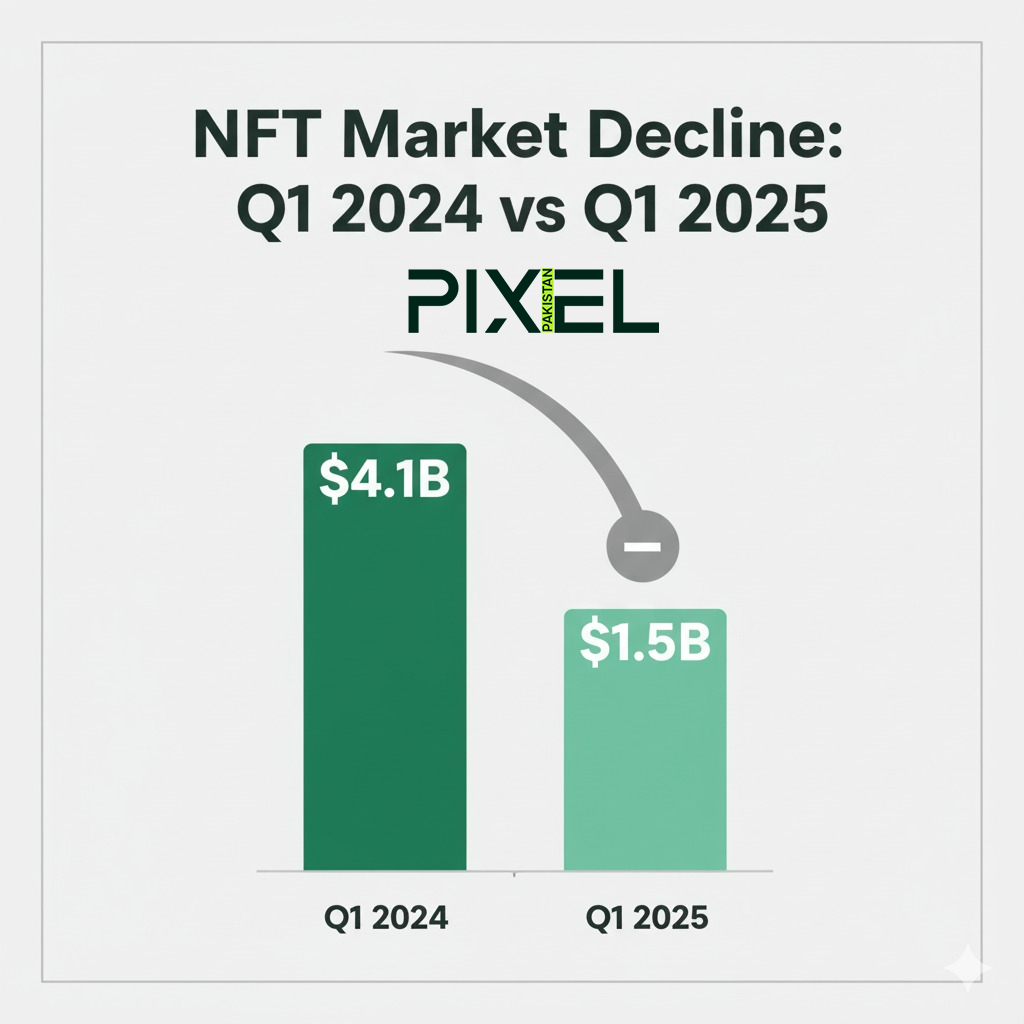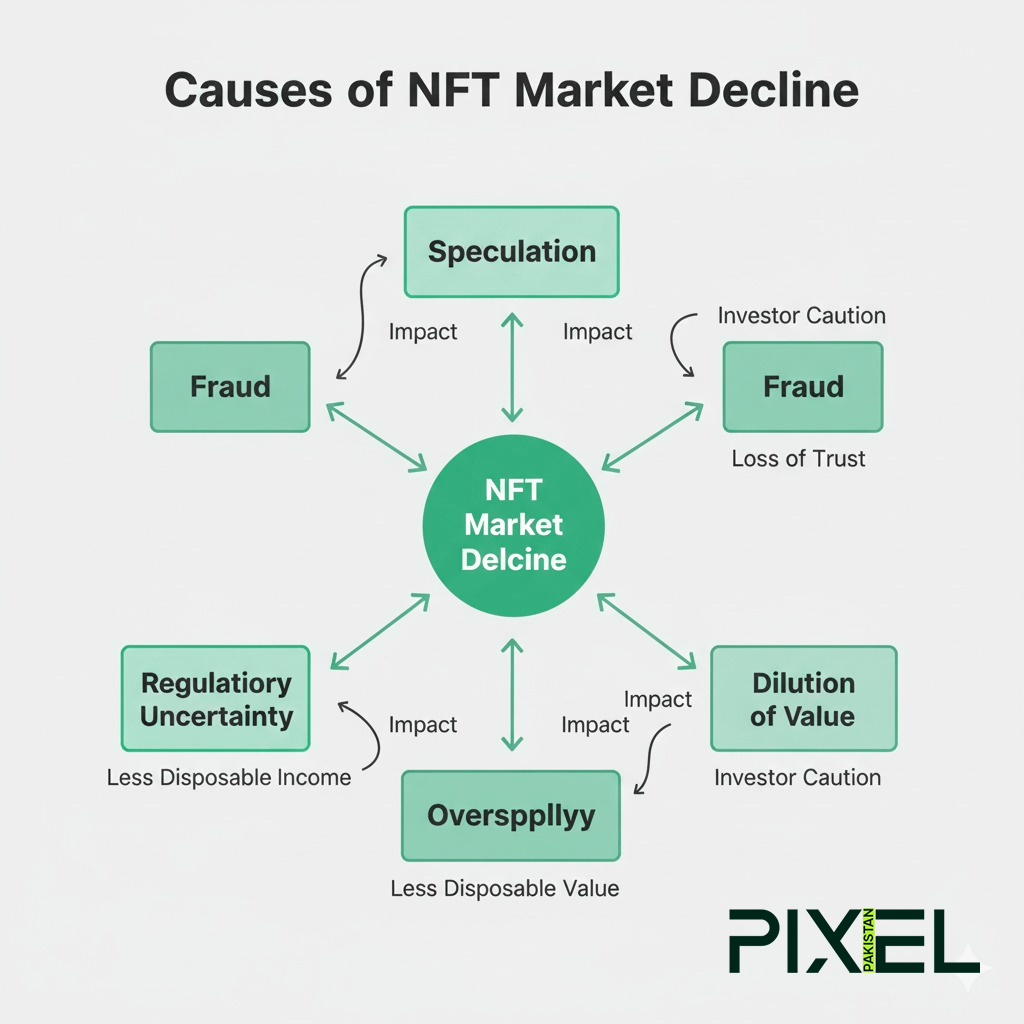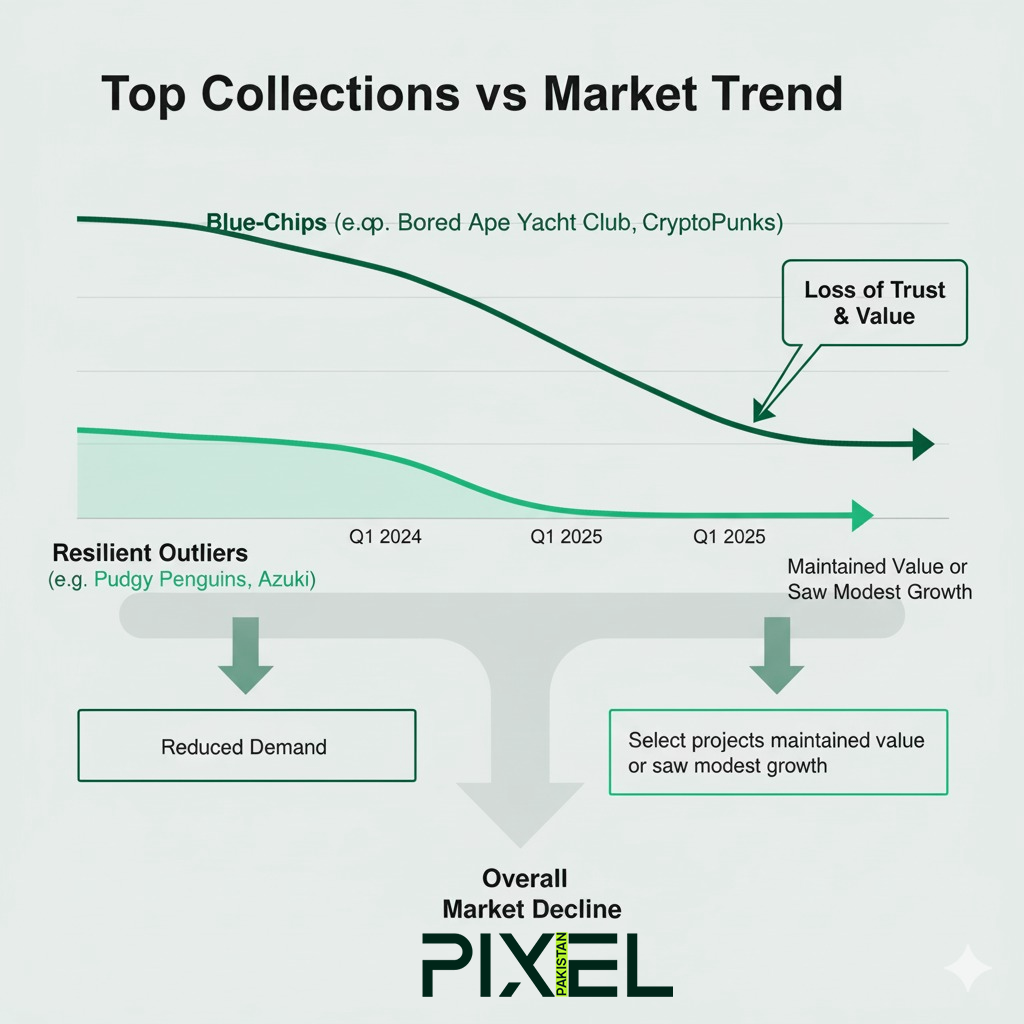Once hailed as a revolution in digital ownership and community economics, Non-Fungible Tokens (NFTs) and Meta’s Web3 push are now facing sharply rising doubts. Between plunging sales volumes, regulatory pushback, and erosion of trust, the hype is cooling fast. This analysis examines what’s going wrong, why, and what it means for the future of Web3.
What’s Going Wrong: Market Data & Trends
Here are some of the clearest signals that NFTs and the Meta-driven Web3 model are in decline:
| Indicator | Data & Trend |
|---|---|
| Sharp Decline in Sales Volume | In Q1 2025, total NFT sales dropped to USD $1.5 billion, down ~63% from Q1 2024’s ~$4.1 billion. |
| Worst Month Comparisons | March 2025 saw NFT sales of $373 million, which is ~76% lower than March 2024 (~$1.6 billion). |
| Blue-Chip Collections Also Falling | Major collections like Bored Ape Yacht Club dropped ~61% year-on-year in sales. CryptoPunks down ~47%. |
| Most NFTs Worthless / Unsold | A study of over 73,000 collections found ~95% are effectively “worthless” (market cap zero) and most haven’t been traded at all. |
In short, both volume and value are evaporating for a large chunk of the market. The few exceptions (some NFT collections) are only highlighting how narrow the winners now are.
Why It’s Happening: Key Drivers of Decline

Several factors are pushing NFTs and Meta-style Web3 into what looks like a bust phase:
- Speculation over utility
Many NFTs were bought as speculative assets, not because of strong long-term use cases (e.g. access, membership, digital rights). Without consistent utility, enthusiasm wanes. - Oversupply & low barriers to entry
Because almost anyone can mint NFTs, the market got flooded. Most projects have no follow-up value, community, or product. Supply far exceeds buyers’ willingness to buy. - Value erosion / floor price crashes
Even for popular collections, floor prices (the minimum price of an NFT in a collection) have dropped dramatically. This wipes out the value for many holders, lowering confidence. - Regulatory pressure / institutional pullback
Platforms (including Meta) are stepping back. For example, Meta wound down its support for NFTs on Instagram and Facebook in early 2023.
Legal, accounting, and tax frameworks are still murky, increasing risk for creators, buyers, and platforms. - Fraud, wash-trading & trust issues
Studies show substantial wash trading (buying/selling among colluding wallets to inflate volume) and “rug pulls” (projects that promise value then disappear). These reduce investor trust. - Macro and crypto bear market effects
The decline of cryptocurrencies in price and sentiment (after high optimism in 2021-22) impacts NFTs heavily, since NFTs are tied to blockchain tokens and investor mood. When crypto weakens, demand for NFTs shrinks. - Meta’s waning commitment & changing priorities
Meta (Facebook, Instagram) rolled out support for NFTs/digital collectibles when hype was high. But less than a year later, it wound down that support, saying it would focus on creators/businesses in other ways.

Implications for the Web3 Vision (Especially Meta’s Model)
Here are what the above trends mean for Web3 as pitched by Meta and others:
- The “digital collectibles + community + ownership = new creator economy” narrative is under pressure. Without strong use cases, this narrative risks being seen as just another flashy speculative bubble.
- It becomes harder to convince creators / users to adopt Web3 tools if the rewards are small or uncertain and the legal/regulatory risks high.
- Centralized platforms (Meta, social networks) may back away or reframe Web3 offerings if they don’t see sustainable business models or user growth (which seems to be happening).
- Web3’s promise of decentralization, user ownership, and creator empowerment is being tested: if many NFTs are worthless, ownership doesn’t translate into value, and communities evaporate, Web3 risks being seen as empty hype.
Are There Surviving Segments & Possible Revival Paths?
Despite the decline, some parts of NFTs / Web3 may survive or even grow:
- Blue-chip collections & brands that have strong communities and utility (e.g. membership, event access, licensing) are still doing relatively better.
- NFTs with real use cases: gaming, virtual land, blockchain-based identity or certification, credential NFTs, etc. These may continue to grow if adoption & infrastructure improve.
- Smaller, niche, utility-driven projects that focus on real value for consumers rather than speculation.
- Regulated platforms / governance frameworks could restore trust. If platforms enforce anti-fraud, ensure authenticity, and provide legal clarity, that could renew confidence.
- Reduced hype = healthier foundations. A shake-out may weed out weak projects, leaving space for more sustainable ones.
What Should Stakeholders Do (Creators, Platforms, Regulators)
| Stakeholder | What Actions Can Help |
|---|---|
| Creators | Focus on utility, community, long-term engagement; avoid over-minting; put guardrails against abandonment or fraud. |
| Platforms | Improve transparency; detect & penalize wash trading and scams; offer verification; support real use cases over hype. |
| Investors / Collectors | Due diligence; avoid buying purely for speculative gain; check project roadmap, ownership rights, community health. |
| Regulators / Policy Makers | Define legal status of NFTs, digital ownership; set rules for taxation, IP, consumer protection; monitor marketplaces. |
NFTs and the Web3 model as popularized by Meta are facing a reckoning. The raw data shows dramatic drops in sales volume, widespread loss of value, and trust being eroded by fraud and oversupply. Without serious shifts — toward utility, regulation, purpose, and community — much of the hype around NFTs risks fading permanently.

That said, collapse in hype often precedes rebuilding. If stakeholders act wisely, the Web3 space may re-emerge in a more grounded, sustainable form — stripped of speculative jargon, but richer in real value, ownership, and use.